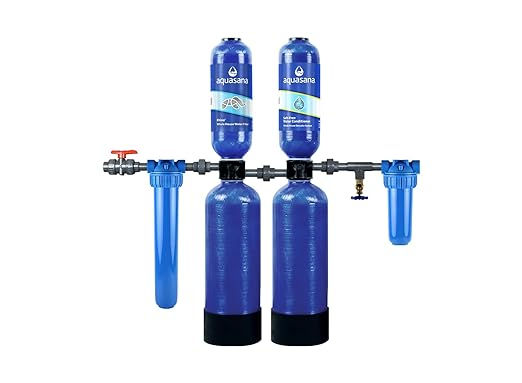10 Steps to Start Living a Minimalist and Sustainable Life
- nhgresolutions
- Sep 7, 2024
- 4 min read
Adopting a minimalist and sustainable lifestyle is about much more than just decluttering—it’s about freeing up space, time, and energy to focus on what truly matters. This approach brings a host of benefits, like extra time for family, increased productivity, more disposable income, and renewed energy for what you love. Let’s dive into ten practical steps to get started, highlighting both the challenges and incredible benefits along the way.
1. Define Your Why
Take a moment to reflect on why you want to adopt a minimalist, sustainable lifestyle. Maybe you want more time with family, less stress, or a cleaner environment.
Challenge: It might feel overwhelming at first to pinpoint one specific reason.
Benefit: Once you’re clear on your “why,” staying motivated becomes much easier, especially when challenges arise. Your purpose fuels consistency.
2. Start with a Decluttering Session
Begin with one area, like your closet or kitchen. Take everything out and evaluate each item. Only keep what serves a purpose or brings you joy. Donate, recycle, or repurpose the rest.
Challenge: It can be hard to let go of things, especially those with sentimental value.
Benefit: A decluttered home means less to clean, organize, and manage, freeing up time and mental space for family and personal projects.
3. Shift to Quality over Quantity
Choose quality items that last longer instead of cheaper, disposable alternatives. For example, invest in durable cookware or versatile clothing pieces.
Challenge: Quality items might have a higher upfront cost.
Benefit: You’ll save money in the long run, spending less on replacements and repairs. Plus, knowing your belongings are made to last is incredibly satisfying.
4. Embrace Sustainable Alternatives
Swap single-use items for sustainable options, like reusable water bottles, cloth grocery bags, and glass containers. Gradually, aim to reduce waste in each area of your life.
Challenge: Finding eco-friendly products that fit your budget or lifestyle might take time.
Benefit: These alternatives not only reduce waste but also cut down on shopping trips and purchases, freeing up both time and money.
5. Plan Your Meals and Shop Intentionally
Meal planning and intentional grocery shopping reduce food waste and simplify your routine. Stick to a list of essentials and avoid impulsive buys.
Challenge: Creating a meal plan weekly might feel like extra work initially.
Benefit: You’ll save money, reduce stress, and eat healthier meals. With more time and energy, you’ll be able to enjoy family meals and activities that nourish you.
6. Streamline Your Wardrobe
Create a capsule wardrobe with versatile pieces you love and wear frequently. Focus on quality, comfort, and personal style rather than trends.
Challenge: Letting go of clothes can be difficult, especially if they’re trendy or once-loved items.
Benefit: A simplified wardrobe means less decision-making each morning, which boosts productivity and energy. You’ll also feel more confident, wearing only what you truly love.
7. Reassess Your Digital Life
Declutter your digital spaces, like your phone, computer, and email inbox. Unsubscribe from unnecessary emails, organize your files, and reduce screen time by setting boundaries.
Challenge: It’s easy to get distracted while organizing digital files.
Benefit: A clean digital life reduces stress, improves productivity, and saves you time. The mental clarity you gain can be spent with family or on activities you enjoy.
8. Prioritize Multi-Functional Spaces and Items
In your home, make each space and item as multi-functional as possible. For example, a sofa bed in the guest room or a coffee table with storage space.
Challenge: Multi-functional furniture can be an investment, but it’s worth it over time.
Benefit: Less clutter and more practical space for activities like family gatherings or relaxation. With a functional home, you’ll enjoy a more comfortable, productive environment.
9. Reframe Your Mindset Around Purchases
Before buying anything new, ask yourself: Do I really need this? Can I borrow, rent, or find a secondhand version? Give yourself a 24-hour “cooling-off” period before making impulsive purchases.
Challenge: Old shopping habits may be hard to break.
Benefit: By curbing unnecessary spending, you’ll have more disposable income and mental space for experiences or things that truly add value to your life, like family outings or learning a new hobby.
10. Cultivate Gratitude for What You Have
Practice gratitude daily. Take a moment to appreciate what you already have and reflect on the positive aspects of a simpler life.
Challenge: It might feel strange at first, especially if you’re used to always wanting “more.”
Benefit: Gratitude shifts your focus from “what’s missing” to “what’s here,” increasing happiness, contentment, and peace of mind. With this mindset, you’ll find more energy and joy to share with loved ones and for the things that truly make you happy.
The Benefits: What You’ll Gain from Sustainable Minimalism
While challenges will arise, the benefits of a minimalist, sustainable lifestyle are well worth the effort. By consuming less, you gain more—time, money, energy, and, most importantly, the freedom to live a life that aligns with what truly matters. Here’s a quick recap of the benefits:
More Time with Family: Less cleaning and managing clutter leaves you more time to spend with loved ones.
Increased Productivity: Fewer distractions and a well-organized space boost focus and efficiency.
Financial Savings: Investing in quality and buying less means more savings in the long run.
Enhanced Well-being: A simpler, more intentional life brings greater satisfaction and energy for what you love.
Starting a minimalist and sustainable lifestyle isn’t about reaching perfection—it’s about creating a life filled with purpose, clarity, and joy. Take one step at a time, and remember that every small change brings you closer to a more fulfilling, balanced, and meaningful way of living.




Comments